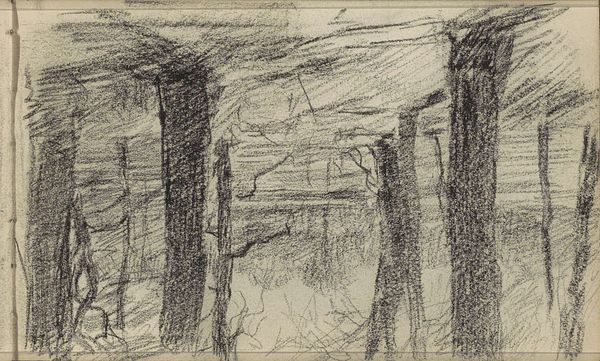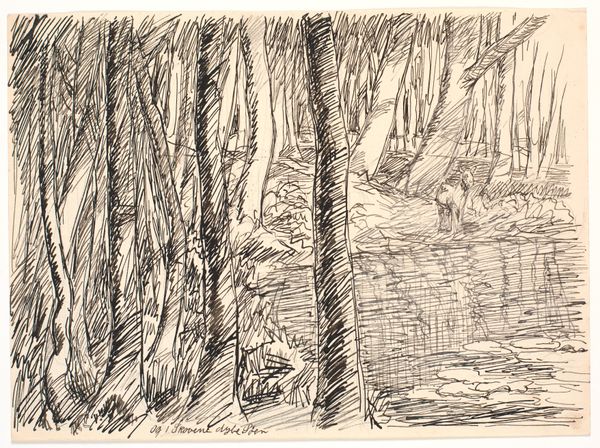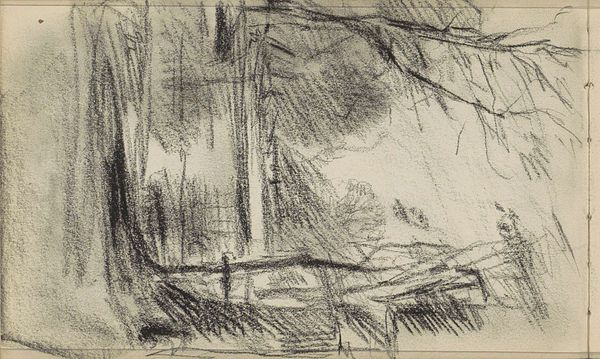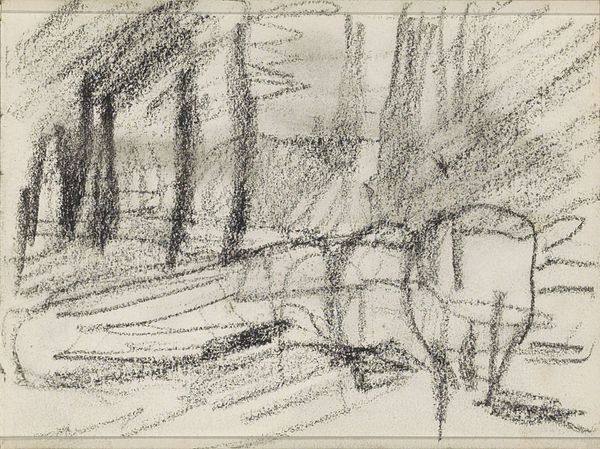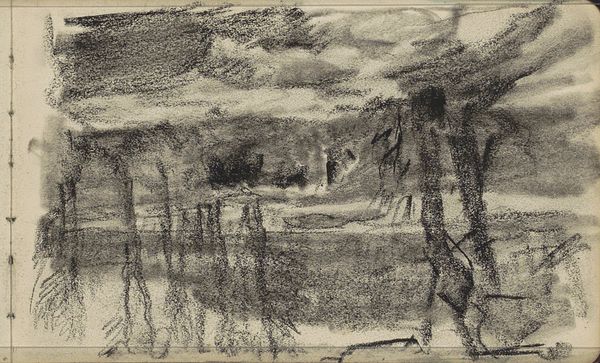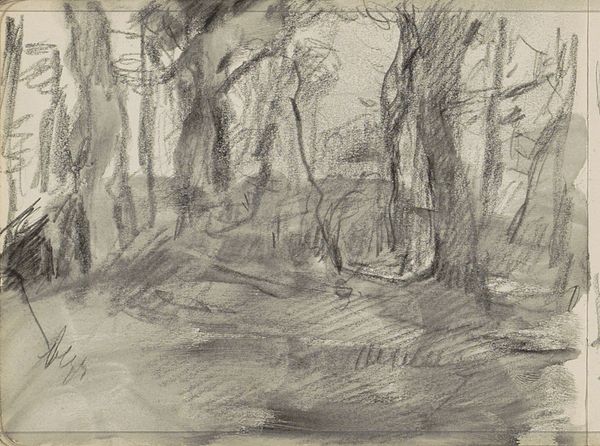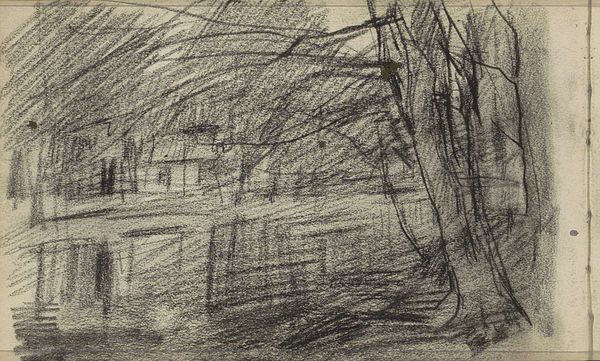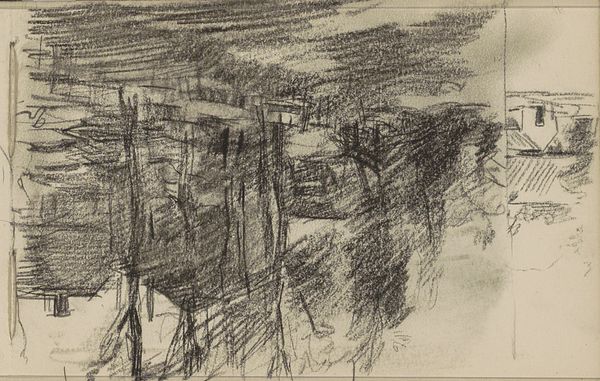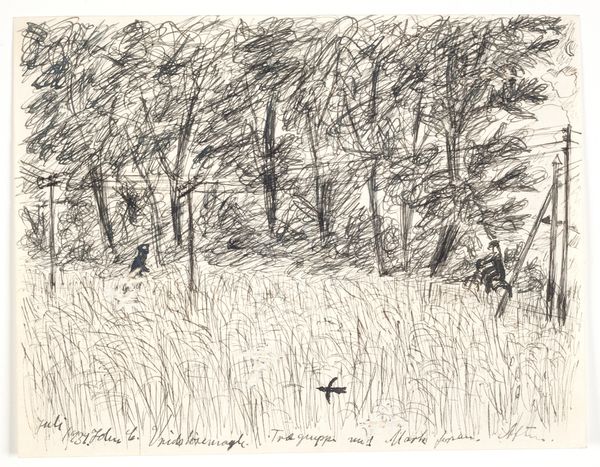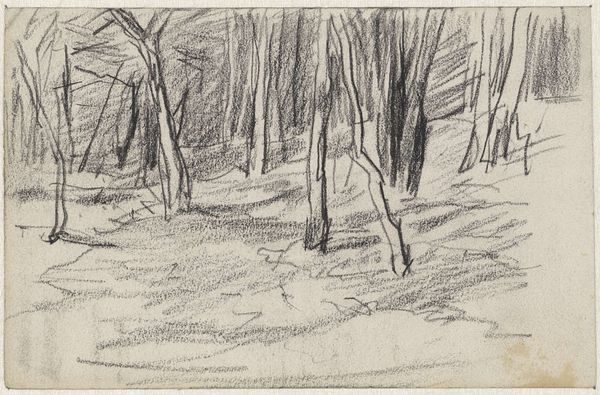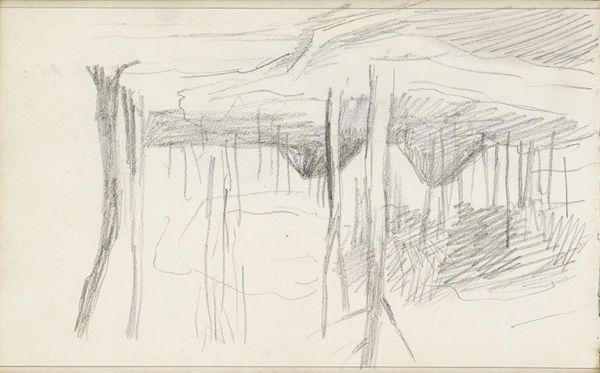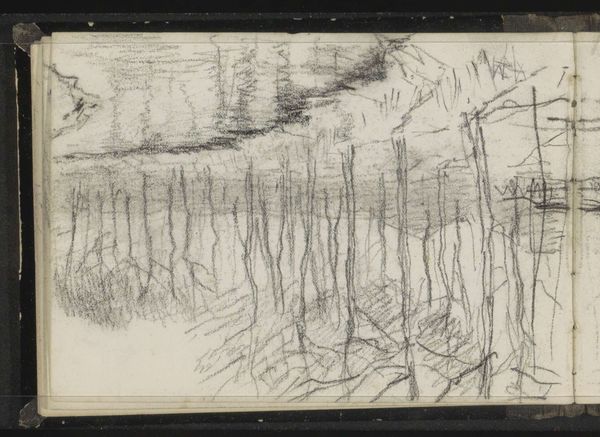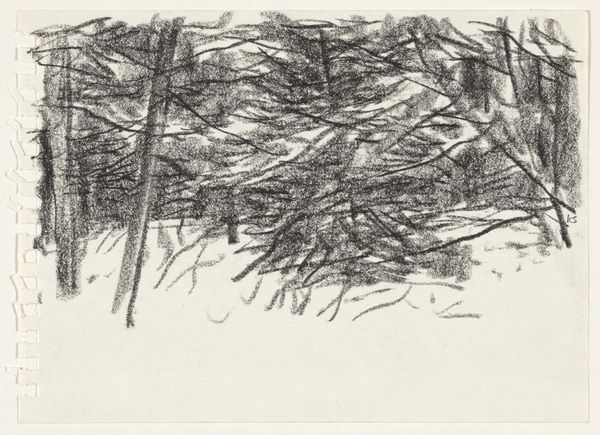
drawing, pencil, graphite
#
drawing
#
impressionism
#
pencil sketch
#
landscape
#
pencil
#
graphite
Copyright: Rijks Museum: Open Domain
Editor: So this is Willem Witsen’s "Gebouw tussen bomen in Ede", likely from 1878. It's a drawing done with pencil and graphite, and it feels quite raw and immediate to me. The strong verticals of the trees and the horizontal fence create a sort of cage around the building, almost suffocating it. How do you interpret that feeling and the composition overall? Curator: It’s fascinating how Witsen frames this building within the landscape. We need to remember the context: late 19th century, industrialization was rapidly changing the Dutch landscape, rural areas included. His impressionistic approach suggests a changing relationship to the natural world. How much control do we really have over nature versus the buildings we put within it? This work may highlight the tension between the encroachment of civilization upon nature and its potential effect of alienation from natural surrounding and rhythms. The starkness of the pencil strokes conveys that uneasiness. Does the piece trigger feelings of unease within you? Editor: It does a little. The lack of detail almost feels like a suppression. I wonder if the sketchy quality contributes to that sense of unease; as if he were actively stripping detail away. Curator: Precisely! What aspects of the drawing do you find particularly unsettling, besides the 'sketchiness'? Think about what he emphasizes and what he chooses to obscure. Editor: I'd say that the imposing trees contrasted with the rather washed out or vague depiction of the building almost renders it secondary, despite the artwork being titled after it. Is it an environmental commentary perhaps, even from that early time? Curator: Exactly! That shift in focus is crucial. Considering the historical period, such subtle visual commentary on humanity's place within nature might be quite radical, subtly critiquing progress and our dominance over nature through these strategic aesthetic choices, what we highlight versus what we don't. This prompts us to question the political underpinnings of landscape art itself, not just as passive records of the natural world, but as statements about power, place, and environmental transformation. Editor: That’s a perspective shift for me. I now see a quiet, maybe unintentional rebellion embedded in what I initially perceived as a simple landscape sketch. Curator: Indeed, it shows that landscape isn’t merely aesthetic; it carries historical, social and environmental weight. There's so much more there to discuss and consider!
Comments
No comments
Be the first to comment and join the conversation on the ultimate creative platform.

